Face-Off: Assassin's Creed Rogue
Cross-gen engine enhancements make the new PC version the pick of the bunch.
Designed with last-gen consoles in mind, Assassin's Creed Rogue slipped under the radar somewhat owing to the controversy surrounding its Unity stable-mate's bugs, glitches and questionable performance. Built using the same technology behind Assassin's Creed 4: Black Flag, Rogue may not deliver the same graphical punch as the next-gen Unity, but some might say that it offers a more liberating gameplay experience when freed from the shackles of on-land exploration. Perhaps more importantly, it doesn't suffer from as many bugs - even if it still features a few random glitches of its own, such as enemy characters disappearing in battle.
Rogue was released late last year on Xbox 360 and PS3, but has only just made its way onto PC - as good an opportunity as ever to revisit a game we didn't have the resources to cover in the deluge of Q4 2014 releases, and to check out the last-gen engine's twilight outing on PC. Well, to cut to the chase, there's good news and there's bad news here: PC owners get to enjoy all of the engine enhancements made for the PC/Xbox One and PS4 versions of Black Flag - features that simply aren't present on the last-gen releases. However, of the existing versions, the Xbox 360 release falls a little short, with some bizarre visual downgrades that lead to poorer image quality, without necessarily bringing about a consistent increase in performance.
What's clear is that the PC version of Rogue offers up the most technically advanced Assassin's Creed experience out of the bunch. Plumes of volumetric smoke flood the screen when cannons and handguns are fired, leaving thick clouds floating across the battlefield (these elements are displayed as flat 2D alpha sprites on consoles), while physics-based foliage reacts with the wind and characters, swaying and bending when disturbed. The ocean is also graced with another layer of waves and shader effects compared to the 360 and PS3 versions, more realistically replicating how the water surface appears. All of these effects are enhancements to AnvilNext made for AC4's debut on current-gen consoles, added to the PC version by default and very welcome here in Assasin's Creed Rogue.
Alternative comparisons:
The use of additional effects on PC delivers an extra layer of refinement over the console releases above the obvious gains in image quality by rendering at a higher resolution, allowing for a huge upgrade in clarity and sharpness over the consoles, with fine details and distant objects resolved much more clearly. However, options to improve overall visual fidelity outside of upping resolution are curiously limited compared to previous Assassin's Creed titles. The in-game menu provides two anti-aliasing options: no AA and FXAA - with MSAA, SMAA and TXAA completely absent despite their appearance in Black Flag.
While the FXAA set-up holds up quite well at higher resolutions, there's more sub-pixel break up across small details that were greatly reduced in Assassin's Creed 4 via SMAA and as such overall image quality isn't quite as refined as the older game. We can understand the decision to remove MSAA: the technique doesn't play well with deferred rendering elements, and causes a noticeable impact on performance. However, the removal of SMAA is more perplexing given the low cost to GPU resources and the generally excellent coverage it provides.
Beyond the boost to resolution, Assassin's Creed Rogue delivers all the usual graphical enhancements over the ageing 360 and PS3 consoles one would expect from a modern PC title. Higher resolution textures and normal maps add more intricate details to environment surfaces and characters, while shadows, texture filtering, surface shaders, and ambient occlusion all receive more advanced implementations. Curiously, motion blur runs in higher precision in some scenes, while in others the effect is a close match for the consoles, displaying clear sample patterns that are used to form the distortion. What's interesting here is that Xbox 360 and PS3 receive the effect too - this wasn't the case with AC4.
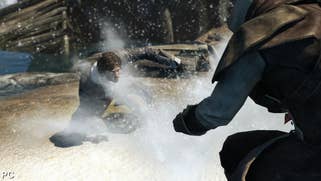
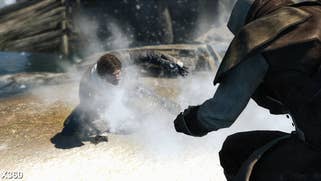




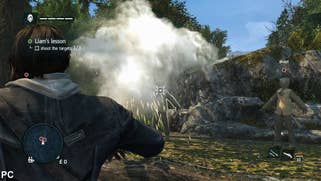
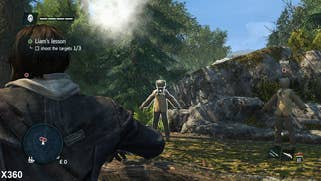


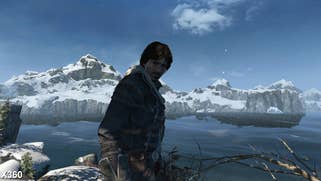
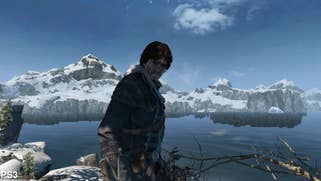


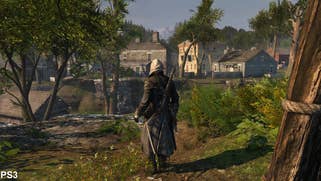






These enhancements fall way short of the generational leap forward in graphical quality present in Assassin's Creed Unity, with towns and small islands appearing less populated and far less detailed compared to similarly sized areas in Ubisoft's current-gen outing. However, on the flipside the reduced level of graphical complexity allows the game to run at 60fps a lot more easily without requiring high-end hardware to do so. With v-sync firmly enabled, we achieved a 60fps experience using a Core i5 3570 and GTX 780, giving a nigh-on flawless presentation on max settings. We encountered some occasional, very mild dips during transitions between cut-scenes and gameplay, but otherwise frame-rates remained stable and consistent throughout.
This is a huge improvement over 2013's Black Flag, where even high-end graphics cards could see crushing drops down from 60fps, and where mid-range GPUs were effectively locked at 30fps with v-sync engaged. While the gameplay in Assassin's Creed isn't hugely latency sensitive, the controls still feel more responsive at 60fps, making it easier to traverse the environment without getting caught on scenery or randomly leaping off a surface in the wrong direction.
With the console versions of Assassin's Creed Rogue, there's a definite sense that the conversion work across both platforms isn't as closely matched as 2013's Black Flag. The Xbox 360 version is softer and noticeably fuzzier than the PS3 release: while both versions utilise a form of FXAA that attempts to mimic traditional multi-sampling style coverage across edges (but considerably blurring the image in the process), the PS3 version renders natively at 720p whereas a sub-HD resolution is in place on the Microsoft console. Pixel counting puts the ballpark native resolution on the 360 at around 1200x688.
Beyond the framebuffer set-up, we find the core art and most of the effects work is interchangeable between PS3 and 360, although there are some unexpected differences between the two platforms that were not present in Black Flag. For one, SSAO is present on PS3, helping to add depth to characters and the environment, while on Xbox 360 the effect is completely absent, lending more brightly lit scenes a generally flatter appearance. Secondly, in most cases we find that streaming is generally slower on 360, with low resolution textures left on-screen (sometimes without normal maps) for a few seconds during changes in camera angles in some cut-scenes, and when transitioning to gameplay. The situation is much improved on PS3, where the majority of the best quality assets are usually loaded in before the scene begins.









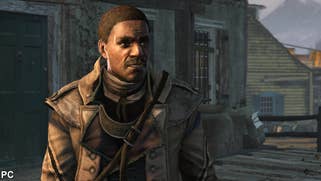



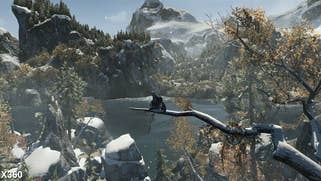
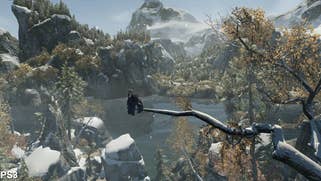
Both versions of Assassin's Creed Rogue require a mandatory install to the hard drive, with the game streaming data from the disc drive and HDD at the same time to maximise the amount of bandwidth available. However, the developers appear to have better optimised the PS3 game in this regard, with the HDD install not appearing to work quite as efficiently on the 360.
Overall, the lack of parity comes as a disappointment given how close Assassin's Creed 3 and Black Flag looked across the last-gen consoles, where performance was the only major differential. Quite why the developer made the decision to chop the resolution and remove SSAO from the 360 game is not entirely clear, as we're not seeing much in the way of performance gains over the last Assassin's Creed title on last gen consoles.
Assassin's Creed Rogue shares a similar performance set-up on consoles to its predecessor. Frame-rates are uncapped - though 30fps appears to be the target - and v-sync is also solidly applied, with only one random torn frame on the PS3 occurring throughout our five minutes of footage. Less demanding moments see the Xbox 360 game frequently operate between 35-40fps, while PS3 frame-rates often fall between 28-32fps in similar situations. In both cases we're looking at an improvement over a general run of play in Black Flag but it's worth bearing in mind that the locations on offer during the first few hours of Rogue are smaller and generally less populated than some of those found in the previous game, leading to higher frame-rates and smaller dips in performance.
| Xbox 360 | PlayStation 3 | |
|---|---|---|
| Lowest Frame-Rate | 24.0fps | 20.0fps |
| Highest Frame-Rate | 45.0fps | 42.0fps |
| Average Frame-Rate | 32.4fps | 28.7fps |
Even so, the fluctuating frame-rates around the 30fps target cause noticeable judder, though the 360 acquits itself more confidently here with the stuttering less impactful than PS3. As expected, scenes featuring heavy alpha effects also operate more smoothly owing to the bandwidth advantage offered by the eDRAM: Microsoft's console more closely holds to 30fps when sailing in foggy weather conditions, whereas we see frame-rates hit much harder on the PS3, with frame-rates often falling into the mid-twenties. That said, detailed environments cause both consoles to dip below 30fps in a similar fashion, and sometimes we see the PS3 gain the advantage when bandwidth isn't a limiting factor - although, this doesn't happen too often. The cut-scenes are quite revealing in this regard, with differences in lighting and shadow-casting impact both versions in different ways, sometimes allowing the PS3 to pull ahead.
Assassin's Creed Rogue: the Digital Foundry verdict
Assassin's Creed Rogue marks the end of the line for the series on last-gen consoles, representing the last hurrah for the older version of the AnvilNext engine. While the technology has served the last few games rather well, Rogue looks and feel rather dated compared to modern releases based on more advanced rendering principles - not least Assassin's Creed Unity. It may look a little rough around the edges, but on a decent PC, the new engine can look rather spectacular.
However, from a gameplay perspective, Rogue still has much to offer: the ability to explore the open ocean provides an enticing hook not found in Unity's strictly city-based approach - which in some ways feels like a step back given that basic mission objectives are not far removed from previous titles. Discovering new exotic locations and revisiting familiar old ones offers a sense of adventure and freedom not found in Unity, although the core mechanics don't feel quite as refined: collision detection is less accurate and animations appear stiffer, while the flow of combat doesn't feel quite as fluid. It's really the naval battles and pirates theme that shines in Rogue and Black Flag.
And that's the bottom line really. While Rogue may not possess Unity's breakthrough technological leap, Ubisoft's hedge-bet for the last-gen systems remains a great game, and one to retrospectively receive Eurogamer's Recommended accolade. Playing on PC brings with it all the advantages you may expect - specifically, the ability power beyond the technological shortcomings of the PS3 and Xbox 360 - while the much improved artwork and AC4's cross-gen engine enhancements are the icing on the cake.

















